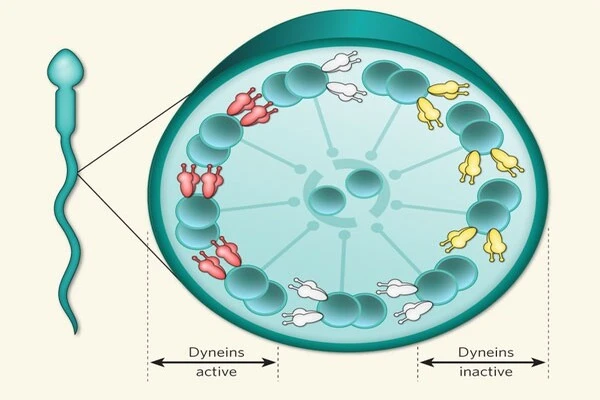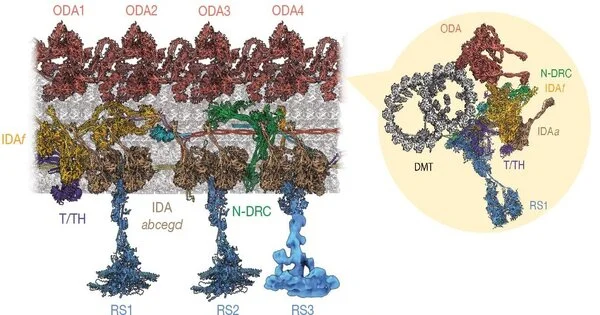The molecular machinery responsible for cilia’s beating motion was first demonstrated using a combination of biochemical, genetic, and imaging techniques. Cilia are slender, hair-like structures found on the surface of many cell types in organisms ranging from single-celled organisms to complex multicellular organisms such as humans. They are essential in a variety of biological processes, including cell movement, sensory perception, and fluid flow.
A team led by UCL researchers created the first image of the structures that power human cilia – the tiny, hairlike projections that line our airways – which could lead to much-needed treatments for people with rare cilial diseases.
The study, published in Nature, used advanced microscopy and artificial intelligence techniques to create a detailed picture of human cilia structure. These are microscopic projections on the cells that line our lungs, ears, and sinuses and beat rhythmically to keep mucus and bacteria out of the lungs. People who inherit the rare condition primary ciliary dyskinesia (PCD) have cilia that are defective and cannot effectively remove debris from the airways, resulting in breathing difficulties and chronic lung infections.
Treatments for PCD currently work to clear people’s airways and prevent infection. Our findings offer the possibility of molecular medicines to precisely target tiny defects in the axoneme and make cilia beat as they should.
Professor Hannah Mitchison
The scientists were able to see the molecular ‘nano-machinery’ that causes cilia to beat for the first time, as identical structures dotted every 96 nanometres along the cilia length. The axoneme is made up of these structures. This complex structure is tightly controlled in healthy airways, with molecules precisely arranged to cause cilia to beat in a rhythmic, wave-like motion around a million times per day.
The team discovered that cilia do not beat correctly in people with PCD because key elements of the axoneme structure are missing due to genetic mutations. This new knowledge could lead to the development of new medicines that target these defects, causing cilia to beat properly.
Study co-author, Professor Hannah Mitchison (UCL Great Ormond Street Institute of Child Health), said: “Treatments for PCD currently work to clear people’s airways and prevent infection. Our findings offer the possibility of molecular medicines to precisely target tiny defects in the axoneme and make cilia beat as they should.”

“Molecular medicines are showing promise in the treatment of other rare diseases, and COVID-19 research has opened up new avenues for delivering these drugs directly to the lung.” If we can combine these advances with our new discoveries, my hope is that molecular medicines will be available to people with PCD within the next 5 to 10 years.”
The team’s findings could also help with infertility because sperm cells use a similar axoneme structure in their tails to propel themselves forward.
The research team was a global collaboration, with scientists based across the UK, US, Netherlands, China and Egypt. “It can be difficult to study rare diseases like PCD, because patients are spread thinly across the world. In the UK, we think around 9,000 families may be affected by PCD,” said Professor Mitchison. “Our study was made possible by a fantastic international collaboration between clinical scientists, biologists and members of the rare disease community willing to take part in our research.”
In addition to human cilia, the researchers looked at the axoneme structure of Chlamydomonas reinhardtii, a single-celled alga that swims by using two tail-like projections on its surface. Despite being separated by more than a billion years of evolution, the alga tails shared structural similarities with human airway cilia, demonstrating the importance of the axoneme throughout evolution.





